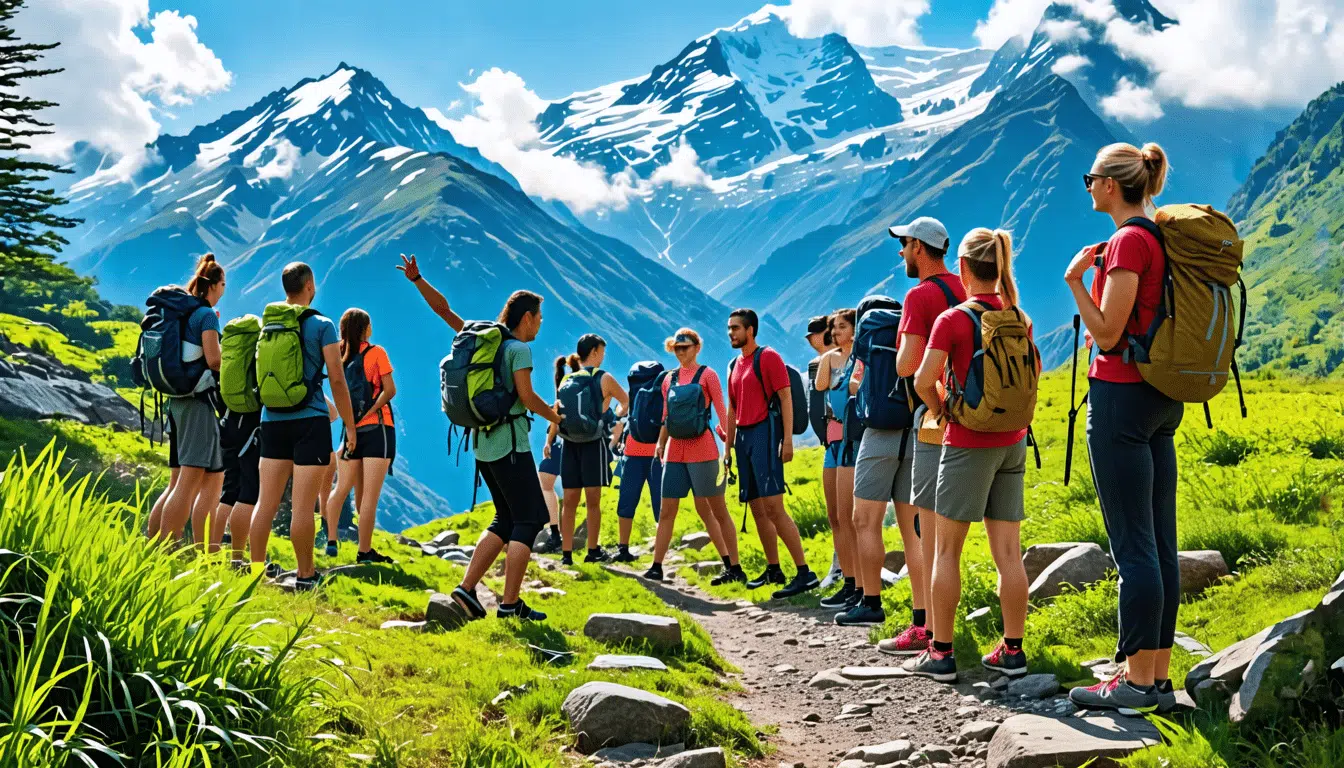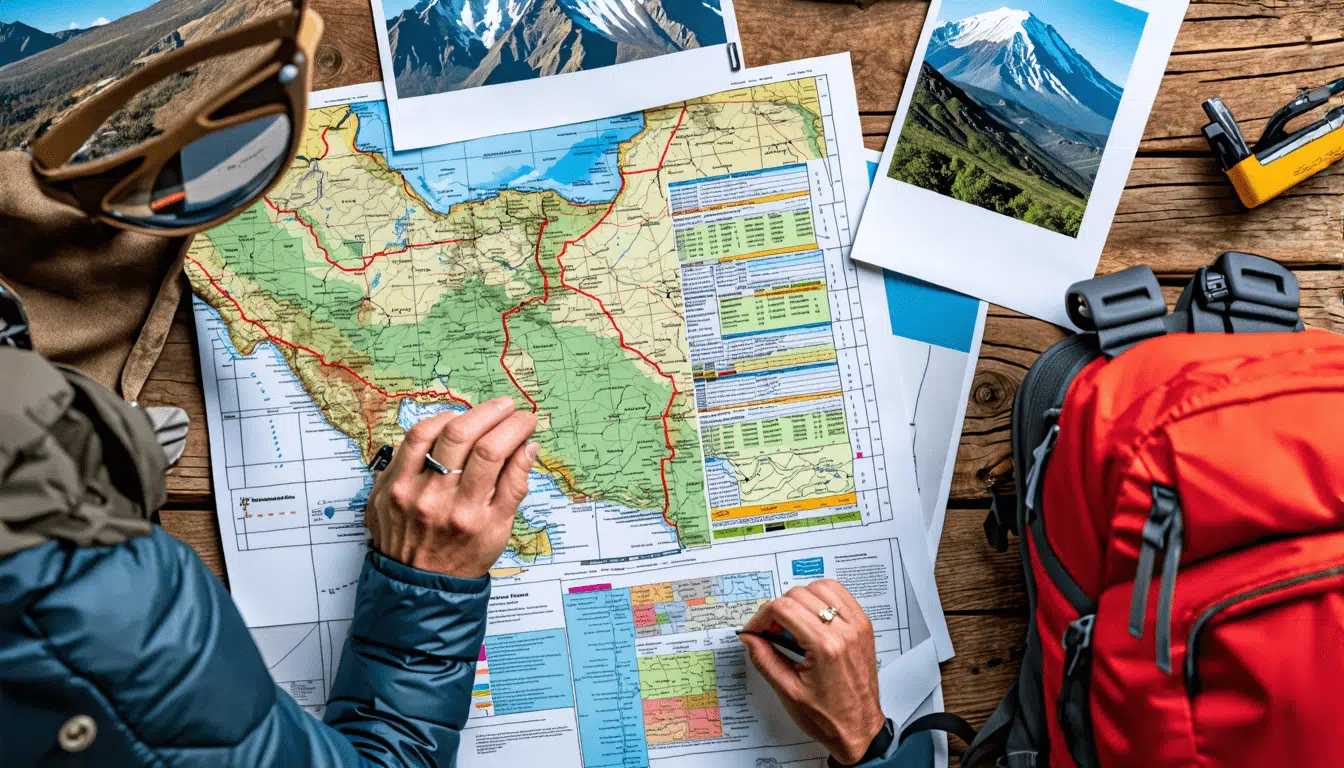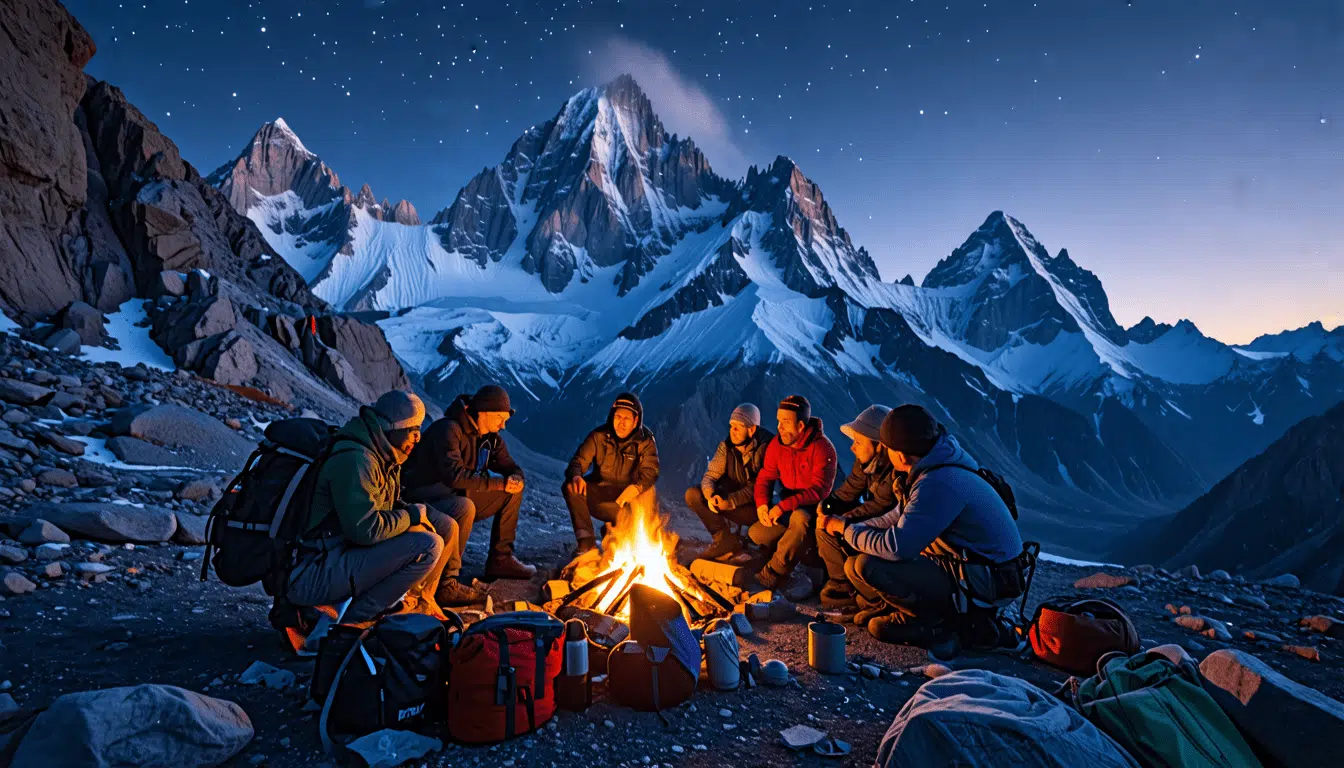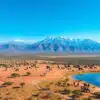Have you ever stared at a majestic mountain and wondered, Could I actually climb that? Let me tell you, I’ve been there. Specifically, when I decided to take on Mount Kilimanjaro, my mind was buzzing with a thousand questions, one of the most pressing being: How fit do I need to be?
Climbing Kilimanjaro isn’t just a physical endeavor; it’s an emotional and mental journey, as well. You get to challenge yourself in ways you never thought possible while experiencing the stark beauty of its various terrains. But let’s dig into what you need to know about the physical demands first. Kilimanjaro’s structure and terrain are diverse – you’ll trek through lush rainforests, across moorlands, and up steep, rocky paths. Imagine waking up each day to a different type of terrain, each bringing its own set of challenges. The typical day on Kilimanjaro is demanding, yet incredibly rewarding. You’ll be hiking for up to six to eight hours a day, and at higher altitudes, every step can feel like a marathon.
Speaking of altitude, that’s one of the biggest hurdles. The summit stands at 19,341 feet, and altitude sickness is a real concern. Understanding how your body reacts to higher elevations and the importance of acclimatization is crucial. Trust me, skipping acclimatization is a rookie mistake you don’t want to make.
Now, let’s reflect, how fit are you right now? Maybe you’re someone who does a bit of jogging or hits the gym a few times a week. That’s great, but Kilimanjaro demands more. You need to have strong cardiovascular fitness, as your heart and lungs will be working overtime to compensate for the lack of oxygen. Muscular strength is equally important, especially in your legs and core. Picture yourself navigating rocky paths and uneven terrains; having the stamina and endurance to maintain a steady pace is essential.
What about any health conditions? Always seek advice from a healthcare professional to understand how your body might react under such strenuous conditions. It’s not just about being fit; it’s about being smart with your fitness.
Preparing properly for Kilimanjaro is non-negotiable. Start with a solid, Kilimanjaro-specific training plan. If you’re unsure where to begin, exercises like hiking with a backpack, stair climbing, and even interval training can be incredibly beneficial. Nutrition also plays a key role – think balanced meals that fuel your hikes and aid in recovery.
Mental preparation is often overlooked but equally important. Climbing a mountain can be as much a mental test as a physical one. Stress management techniques like mindfulness or visualization can be helpful tools in your arsenal.
If you’re still on the fence, hearing from those who’ve already made the trek could provide just the push you need. Past climbers often share stories of triumphs and challenges, offering priceless insights. Expert advice from fitness trainers or climbing guides can also point you in the right direction, addressing common hurdles and how to tackle them effectively.
So, are you ready to lace up those hiking boots and embark on this adventure? By understanding the physical demands, assessing your fitness, and preparing effectively, you can make the climb up Kilimanjaro not just a goal but a reality.
Understanding the Physical Demands of Climbing Kilimanjaro
Overview of Kilimanjaro’s Structure and Terrain
When you think of climbing Kilimanjaro, do you picture scaling vertical cliffs? Luckily, it’s not quite that dramatic! Mount Kilimanjaro is unique because it’s classified as a walk-up mountain, meaning you won’t need ropes or technical climbing skills. However, don’t let the term walk-up deceive you—it’s still a serious trek.
Kilimanjaro boasts varied terrain, from lush rainforests to barren lunar landscapes. Essentially, you’re looking at five distinct ecological zones: the cultivated foot slopes, the rainforest zone, the heath and moorland zone, the alpine desert zone, and finally, the arctic summit zone. Imagine starting your journey in a jungle and ending it on a glacier! Each zone presents its own set of challenges, making the hike both exhilarating and demanding.
Typical Day on the Mountain: What to Expect
So, what does a day on Kilimanjaro look like? Picture this: you’re up before dawn, looking out at a stunning sunrise over Africa. Then it’s time to pack up and hit the trail. On average, you’ll be hiking 4-7 hours a day. Not too bad, right? But keep in mind that the conditions can vary drastically.
Some days you’ll be strolling through lush forests, and other days you’ll be scrambling over rocky terrain. As you gain elevation, the hours may feel longer due to reduced oxygen levels. By the time you reach your campsite for the night, you’ll be ready for a hearty meal and some rest. It’s grueling but immensely satisfying.
Elevation and Altitude Challenges
Let’s talk altitude—one of the most underestimated challenges of climbing Kilimanjaro. At its peak, Mount Kilimanjaro stands at a towering 19,341 feet (5,895 meters). As you ascend, the air gets thinner, meaning less oxygen is available for your body.
Ever felt dizzy after a short, steep climb during a hike? Multiply that by about a hundred, and you’ll get an idea of what altitude sickness feels like. Symptoms can include headaches, nausea, dizziness, and extreme fatigue. Pretty rough, right? That’s why understanding how your body reacts to high altitudes is crucial.
Importance of Acclimatization
Now, let’s discuss acclimatization—your best friend on this journey. Acclimatization is the process of adjusting to lower oxygen levels at high elevations, and it can make or break your climb. “Pole, pole”—Swahili for “slowly, slowly”—is the mantra you’ll hear a lot. It’s all about giving your body enough time to get used to the altitude.
How do you acclimatize effectively? Slowly increase your altitude each day and consider taking acclimation days, where you rest at a slightly higher altitude before descending back to sleep at a lower elevation. Staying hydrated and eating well are also crucial. Some hikers even swear by the climb high, sleep low approach—ascend during the day to a high point and sleep at a slightly lower altitude to help your body adjust.
Remember the tortoise and the hare? On Kilimanjaro, it’s the tortoise approach that wins the race. Patience, my friend, will get you to the summit.
Assessing Your Current Fitness Level
General Fitness Requirements for Trekking
It’s one thing to hike up a hill in your local park, but Kilimanjaro is a different beast entirely. Imagine trekking for up to eight hours a day at high altitudes. Your body needs to be prepared for this kind of strain. Generally speaking, if you can comfortably complete a full day of physical activity – say, hiking up and down some steep terrains without feeling like you need to be airlifted out – you’re on the right track.
But what does general fitness really mean here? In prime terms, it means having a good mix of cardiovascular fitness, muscular strength, and flexibility. This ensures you’re ready to handle both the long treks and the varying gradients of the trails. It’s not about being an Olympic athlete; it’s more about having a functional level of fitness that suits long-distance trekking.
Evaluating Cardiovascular and Muscular Strength
Think of it this way: climbing Kilimanjaro is like running a marathon but uphill – and mixed with some intense stair climbing. Got a treadmill or access to a trail? Try engaging in consistent activities that elevate your heart rate. For instance, if you can comfortably run or briskly walk for an hour without gasping for air, you’re probably on a solid footing. And let’s not forget about stair climbing or step workouts – these simulate the kind of grade you’ll face on the mountain.
Muscular strength is equally critical. While you won’t be bench-pressing your way up Kilimanjaro, strong legs are a must. Squats, lunges, and calf raises should become your new best friends. And don’t ignore your core muscles; a strong core helps maintain stability and overall balance. As someone once humorously said to me, you don’t need a six-pack to climb Kilimanjaro, but you don’t want a bag of jelly either.
Importance of Stamina and Endurance
Consider this: endurance is what keeps you going over multiple days. Building endurance means gradually increasing the intensity and duration of your workouts. Can you manage a back-to-back 10-hour hike one day and get up to do it all over again the next? That’s the endurance level you’re aiming for. Start incorporating longer hikes into your weekend routines or opt for back-to-back exercise days to simulate the continuous effort required.
I remember my first endurance test. I thought, How hard can it be to hike for a couple of days? Spoiler alert: it was pretty tough. My legs felt like lead, and my excitement turned into questioning every life choice I’d ever made. But with persistent training, those long treks became more manageable and even enjoyable. Trust me, your body will thank you on the mountain.
Health Conditions and Considerations
This brings us to a really crucial part – your health. Do you have any underlying health conditions that could affect your climb? It’s important to have a thorough check-up with your doctor before embarking on this adventure. Conditions like asthma, high blood pressure, or heart problems could require special precautions or even put you at risk.
Imagine climbing halfway up the mountain and suddenly realizing you’re out of your medication or struggling to breathe properly. That would not be fun. It’s not just about climbing; it’s about being safe and feeling secure in your ability to handle the physical demands. Talk to your healthcare provider. Discuss your plans and see if there are any adjustments or additional medications you might need to carry with you.
In conclusion, you don’t have to be an elite athlete to conquer Kilimanjaro. However, having the right level of general fitness, possessing good cardiovascular and muscular strength, building stamina and endurance, and ensuring you’re on top of any health conditions, are all essential for a successful climb. So, lace up those hiking boots and start your preparations! Your future self, standing triumphantly on the summit, will thank you.
Preparing Effectively for the Climb
Creating a Kilimanjaro-Specific Training Plan
Alright, let’s talk prep work. When I decided to tackle Kilimanjaro, the first thing I did was set up a training plan. Seriously, nothing gets you up that mountain like a bit of structure. The key is to start early—I’d say a solid four to six months before your climb. Yep, it sounds like a long slog, but trust me, you’ll thank yourself when you’re halfway up the Shira Plateau and still feeling spry.
Your plan should be a mix of cardiovascular exercises, strength training, and, of course, some actual hiking. Think of it like building a cake: each layer (or type of exercise) adds to the overall structure. A good week for me looked like three cardio sessions, two strength training days, and one long hike. Always leave a day for rest; your muscles need it!
Recommended Exercises and Activities
What’s on the menu for workouts, you ask? Let’s dive in. For cardio, think running, cycling, or swimming. My personal favorite is trail running because it mimics the varying terrain you’ll find on Kilimanjaro. An hour of intense cardio three times a week should get your heart in shape.
Strength training is all about building the stamina in your legs and your core. Squats, lunges, and deadlifts are your friends here. Don’t skip the upper body either—get some push-ups and pull-ups in. Upper body strength helps stabilize you as you trudge up those rocky paths.
Oh, and here’s a tip: if you’ve got access to a stair machine or a real set of stairs, use them. Climbing endless stairs is as close as you’ll get to mimicking the incessant uphill of Kilimanjaro. I probably climbed enough stairs to rival the Empire State Building at least twice!
Nutritional Tips for Optimal Fitness
Food is fuel, folks! When I changed my diet to support my training, the difference was night and day. Aim for balanced meals rich in protein, healthy fats, and complex carbs. In the months leading up to the climb, I became best buds with chicken breasts, avocados, quinoa, and every vegetable under the sun.
Staying hydrated is equally crucial. I made it a rule to drink at least three liters of water a day. High-altitude adventures dehydrate you faster than you can say Uhuru Peak, so getting into a good hydration habit early is essential. And don’t shy away from electrolyte drinks—they can be a lifesaver during those intense training sessions.
Snacking smartly is part of the game too. Think almonds, dried fruits, and protein bars. They are excellent for quick energy boosts and are easy to carry around. Remember, a well-nourished body performs better, period.
Mental Preparation and Stress Management
The climb isn’t just a physical challenge; it’s a mental one too. Visualize success. Picture yourself standing at the summit—feeling the exhilaration and pride. During my training, I spent a few minutes each day closing my eyes and visualizing every step of the journey. It worked wonders for my motivation.
Let’s not forget stress management. Life gets in the way, sure, but keeping calm and focused is crucial. Mindfulness techniques, like deep breathing exercises, helped me manage the stress of training while juggling everyday responsibilities. A bit of yoga here and there? Absolutely. Flexibility is a bonus, and the meditative aspect helps keep your mind sharp.
Lastly, connect with a community. Whether it’s a local hiking group, an online forum, or a few friends who are as adventurous as you are, having a support system makes a world of difference. Sharing tips, experiences, and even just encouraging words can keep you on track on those days when your bed is more tempting than a 5-mile run.
So, are you feeling pumped yet? Prepare effectively, and Kilimanjaro won’t stand a chance. You’ve got this!
Real-Life Experiences and Expert Recommendations
Testimonials from Past Climbers
Let me tell you about my friend, Sarah. Two years ago, she decided to tackle Mount Kilimanjaro, and believe me, it was no small feat. Sarah was an average office worker, not particularly super fit but definitely determined. She trained for about six months, combining cardio, strength training, and lots of hiking. When she finally set foot on the mountain, she realized that although the trek was grueling, her preparation paid off.
Sarah shared the most incredible story about her journey. She mentioned a particularly treacherous day when the thin air made her head spin, and her legs felt like lead weights. But, thanks to her consistent training and mental fortitude, she kept going. You don’t have to be an elite athlete, she said, just committed and prepared.
Interviews with Fitness Experts and Climbing Guides
To get a more expert perspective, I talked to a seasoned climbing guide, Mark, who’s been leading Kilimanjaro expeditions for over a decade. Mark emphasized that while being in good physical shape is crucial, mental toughness and adaptability are equally important. Climbing Kilimanjaro is as much a mental challenge as it is a physical one, he explained. I’ve seen very fit people struggle because they underestimated the importance of mental preparation.
Then there’s Jessica, a fitness trainer who specializes in preparing clients for extreme adventures. Jessica advocates for a well-rounded training regimen. Focus on building your cardiovascular endurance, core strength, and leg muscles. Interval training is great because it simulates the varying levels of intensity you’ll face on the climb, she advised. And don’t forget flexibility training – yoga or stretching can make a big difference in preventing injuries.
Common Challenges and How to Overcome Them
Altitude sickness is one of the most common issues climbers encounter. It can hit anyone, regardless of fitness level. Remember John from the office? He’s a marathon runner and thought he had it in the bag, but on day three, the elevation got to him. He learned the hard way that ascending too quickly without proper acclimatization can be a real setback.
Mark, our climbing guide, shared his wisdom on this: Take it slow, and listen to your body. Hydration and pacing are key. Never underestimate the power of taking an extra day or two for acclimatization. Another frequently mentioned challenge is the cold. Sarah dreaded the freezing nights, but layering up and investing in quality gear saved her from becoming an icicle.
Final Tips on Ensuring a Successful Summit Attempt
If there’s one thing that ties all the advice and experiences together, it’s the importance of preparation. “Failing to prepare is preparing to fail,” right? Here are some final tips from those who’ve been there and done it:
- Train Regularly: Consistency is key. Mix cardio, strength, and flexibility training for a balanced approach.
- Stay Hydrated: Drink lots of water before, during, and after your climb. It helps with everything from altitude acclimatization to muscle recovery.
- Listen to Your Body: If you feel unwell, slow down or rest. Pushing through can often do more harm than good at high altitudes.
- Gear Up: Invest in good quality boots, clothing, and gear. It’s better to be over-prepared than caught off guard on the mountain.
- Mental Preparedness: Visualization and mindfulness can prepare you mentally for tough parts of the climb. Picture yourself succeeding!
With these real-life insights and expert recommendations, you’re better equipped to face the mountain. The message is clear: You don’t need to be a superhuman. Preparation, both physical and mental, and some gritty determination can get you to the summit of Kilimanjaro. So, are you ready to start training?
Conclusion
Climbing Kilimanjaro isn’t just a walk in the park, but it’s also not an impossible feat, even if you’re not a professional athlete. Throughout this journey, we’ve broken down the climb into understandable chunks—from the physical demands and terrain to evaluating your fitness and preparing both your body and mind.
Remember, the mountain itself isn’t just the challenge; it’s the altitude, the changing environments, and the endurance needed over multiple days. It’s akin to running a marathon—one that climbs nearly 20,000 feet into the sky! The key here isn’t necessarily how fit you are to start, but how committed you are to preparing for what’s ahead.
When I started preparing for Kilimanjaro, I realized it wasn’t about being able to run a 10K in record time. Instead, it was about having the stamina to keep going, one step after another. Like others before me, I didn’t start off super fit, but through targeted training, I built up the necessary strength and endurance.
As you’ve seen from the testimonials and expert recommendations, real-life climbers come in all shapes, sizes, and fitness levels. What sets successful climbers apart isn’t just physical fitness, but a well-rounded approach of proper training, mental preparedness, and a focus on acclimatization. And, let’s not forget, a sense of humor helps when the going gets tough!
So, whether you’re a seasoned trekker or someone who’s just getting off the couch, know that with the right preparation, Kilimanjaro is within your grasp. Will it be easy? Not always. But the view from the top, and the sense of achievement you’ll feel, make every step worthwhile. Happy climbing!






